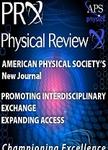版权所有:内蒙古大学图书馆 技术提供:维普资讯• 智图
内蒙古自治区呼和浩特市赛罕区大学西街235号 邮编: 010021

作者机构:Institute for Nuclear Research 117312 Moscow Russia Departamento de Física y Centro Científico Tecnológico de Valparaíso-CCTVal Universidad Técnica Federico Santa María Casilla 110-V Valparaíso Chile Institut für Theoretische Physik Universität Tübingen Kepler Center for Astro and Particle Physics Auf der Morgenstelle 14 D-72076 Tübingen Germany Department of Physics Tomsk State University 634050 Tomsk Russia Tomsk State Pedagogical University 634061 Tomsk Russia Matrosov Institute for System Dynamics and Control Theory SB RAS Lermontov str. 134 664033 Irkutsk Russia
出 版 物:《Physical Review D》 (Phy. Rev. D)
年 卷 期:2018年第98卷第1期
页 面:015007-015007页
核心收录:
基 金:German Bundesministerium für Bildung und Forschung, (05P2015, BMBF-FSP 202) Comisión Nacional de Investigación Científica y Tecnológica, CONICYT, (ACT1406, PIA/Basal FB0821) Comisión Nacional de Investigación Científica y Tecnológica, CONICYT Fondo Nacional de Desarrollo Científico y Tecnológico, FONDECYT, (1150792) Fondo Nacional de Desarrollo Científico y Tecnológico, FONDECYT Tomsk State University, TSU, (8.1.07.2018) Tomsk State University, TSU
主 题:Particle interactions
摘 要:We study the lepton flavor violating (LFV) e(μ)−τ conversion in deep inelastic scattering (DIS) of electrons (muons) on fixed-target nuclei. Our model-independent analysis is based on the set of low-energy effective four-fermion LFV operators composed of leptons and quarks with the corresponding mass scales Λk for each operator. Using the estimated sensitivity of the search for this LFV process in events with large missing energy in the NA64 experiment at the CERN SPS, we derive lower limits for Λk and compared them with the corresponding limits existing in the literature. We show that the DIS e(μ)−τ conversion is able to provide a plenty of new limits as yet nonexisting in the literature. We also analyzed the energy spectrum of the final-state τ and discussed the viability of the observation of this process in the NA64 experiment and ones akin to it. The case of polarized beams and targets is also discussed.